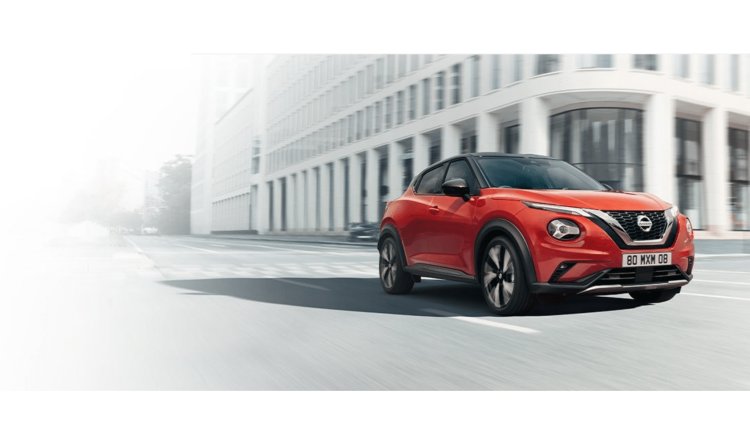Nissan has electrified the popular Juke

Fuel consumption is reduced by up to 40% thanks to the employment of a sophisticated transmission with several modes, excellent regenerative braking, and a highly efficient battery.
Later in the year, a new product from Nissan's kitchen makes its way to the domestic market. It's a crossover model Juke. Unlike standard thermal motors aided by an electric motor, the Juke Hybrid is expected to have a hybrid drive with different modes of operation. Some of the benefits include automatic starting in electric mode and lower fuel usage.
This is due mostly to the intelligent multi-mode gearbox, excellent regenerative braking, and a highly efficient battery. Nissan engineers' main goal was to create a hybrid drivetrain that would deliver improved driving pleasure as a powerful, responsive, and efficient engine.
The information gained within the Alliance was employed in the development of this powertrain, therefore the new powertrain is a symbiotic symbiosis of enhanced thermal motor and electrical circuits. It is powered by a petrol engine that produces 69 kW / 94 horsepower and 148 Nm of torque. It is aided by a Nissan electric motor with a power output of 36 kW / 49 hp and torque of 205 Nm.
There's also a 15 kW electric generator, an inverter, a 1.2 kWh battery with a water cooling system, and a fully unique gearbox. As a result, the engine produces 25% more power than the conventional petrol engine and consumes less fuel in urban (up to 40%) and mixed (20%) driving cycles. According to current data, this model has a mixed cycle consumption of 5.2 l / 100 km.
New, more capable gearbox
So let us begin with the most vital point. The improved multi-mode gearbox is the big news. This gearbox is distinguished by its optimal use of driving power, whether electric, thermal or combined, in addition to greatly reduced friction. The transmission is built without a clutch to decrease friction (so-called dog-clutch transmission). When switching between four gears of a thermal motor and two gears of an electric motor, this design substitutes conventional synchronous rings.
The car starts in 100 percent electric mode automatically, and the two electric motors work together to synchronize speed and assure smooth, linked, and responsive acceleration. Advanced serial-parallel architecture and an advanced algorithm for gear management and regenerative braking govern the gearbox.
The drive is tailored to multiple forms of hybridization (serial, parallel, serial-parallel) and instantaneously respond to the requirements for acceleration and power delivery without the assistance of the driver. All of this should provide the driver with instant acceleration and low emissions.
Electric only
Aside from the fact that it is powered by electricity, the new hybrid assembly is said to be capable of traveling in electric mode up to a speed of 55 km/h. Although not all technical data has been fully homologated, Nissan specialists claim that they tested 80 percent of their driving in electric mode with brief hybrid phases to charge the battery before returning to electric mode.
The hybrid circuit prefers to operate in electric mode. The Juke Hybrid, on the other hand, has a button that allows you to disable the hybrid mode and drive only with an electric motor. For example, in start-up scenarios where modest speeds are used, such as school zones, parking lots, driveways, and traffic jams. Of course, a certain degree of battery charge is required in order to drive only on electric power.
When the car slows down, the electric motor serves as a generator, collecting kinetic energy, as we are accustomed to on hybrid models. After that, it is transformed into electricity and stored in the propulsion battery. An innovative regenerative braking system blends regenerative and conventional braking to provide the most natural pedal sensation while also increasing energy collecting efficiency.
The hybrid circuit can be operated in three different modes: Eco, Normal, and Sport. They influence not just the steering wheel's resistance, the operation of the air conditioner, and the responsiveness of the accelerator and brake pedals, but also the power of regenerative braking and the battery's charge level. Thus, in Sport mode, regenerative braking is intensified to collect as much electricity as possible for efficient acceleration.
The e-Pedal function, which was previously only available in the Leaf electric variant, is now also available in the Juke Hybrid. This allows only the accelerator pedal to be used to regulate acceleration and deceleration. By removing one's foot from the accelerator pedal, the car softly brakes (up to 0.15 g) until it reaches a speed of 5 km/h. It is occasionally required to use the brake more forcefully for a stronger deceleration, and it is always important to totally stop the car (it is possible to activate the Auto-hold function).
Smaller design tweaks, and a reduced trunk
Minor design changes are also included in the new Juke model. As a result, the 'Hybrid' label is applied to the front door and boot lid. Where the front grille joins the bonnet, a prominent black stripe connects it to other Nissan electrified cars. Furthermore, the mesh front grille has a smaller hole, which increases airflow in the lower area due to the hybrid version's lower cooling requirements.
Interventions on the body can also be seen beneath the bumper (enhanced airflow), and a radiator grille has been added to automatically optimize cooling and decrease air resistance as much as feasible.
The rear spoiler profile over the rear window has also been somewhat changed. This was done to ensure that airflow was not hindered, which is why the flags on the front and back wheels were modified and repositioned. Similarly, the rear axle has been outfitted with a cover that improves the chassis' aerodynamics. As with the regular thermal edition, new 17-inch alloy wheels have been created, as have two-tone 19-inch aerodynamic wheels like the Nissan Ariya.
Minor alterations can also be seen in the passenger compartment. As a result, the speed is displayed on the right of the two indicators on the instrument panel, while the power usage is displayed on the left. Its needle progresses from 'charging' during regenerative braking to 'eco' during electric driving to 'power' when the hybrid drive is engaged.
The charge status of the battery is also indicated at the bottom of the left indicator. The power flow can be seen on the 7-inch instrument panel display. On the center console, behind the electric parking brake, there is an e-Pedal function button. The trunk volume has been reduced to 354 liters due to the installation of a 68-liter battery.





























